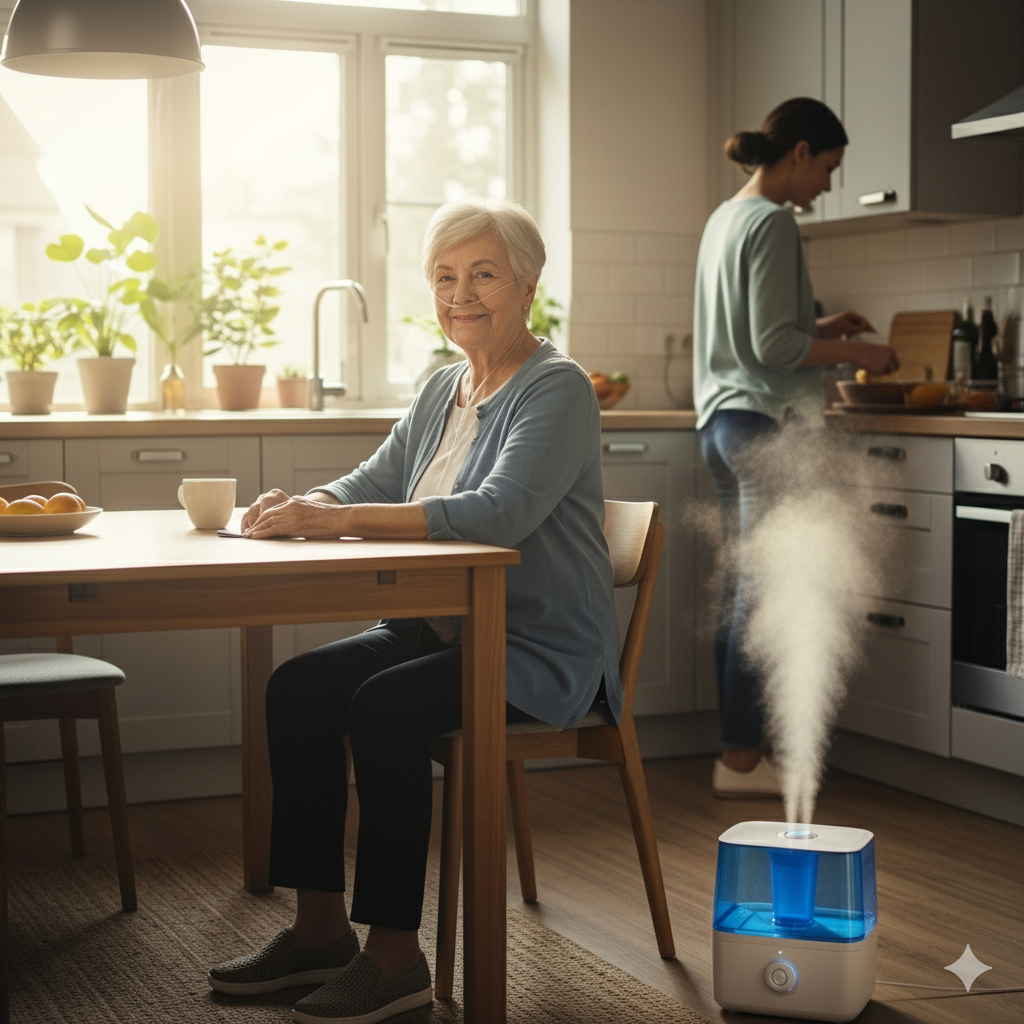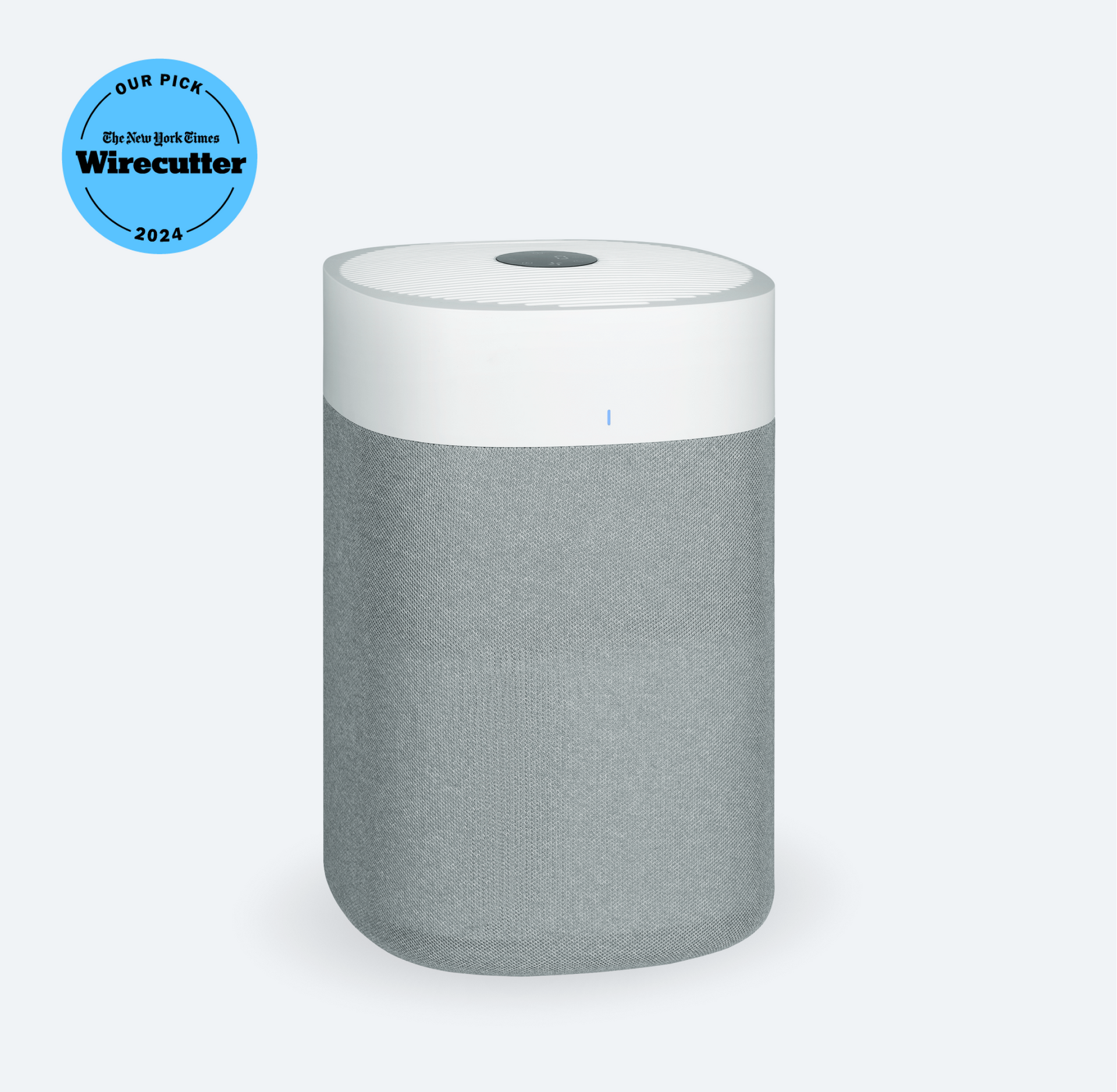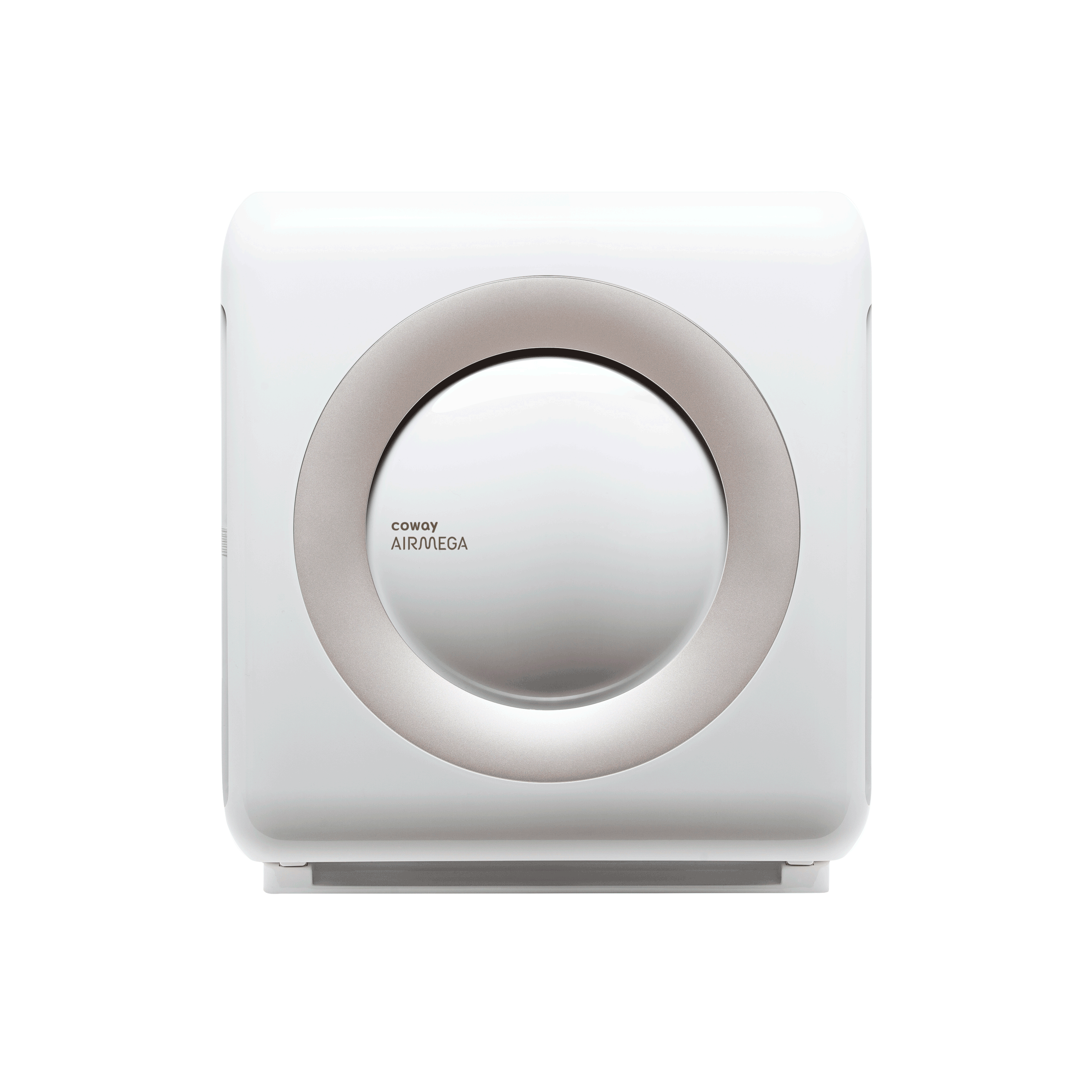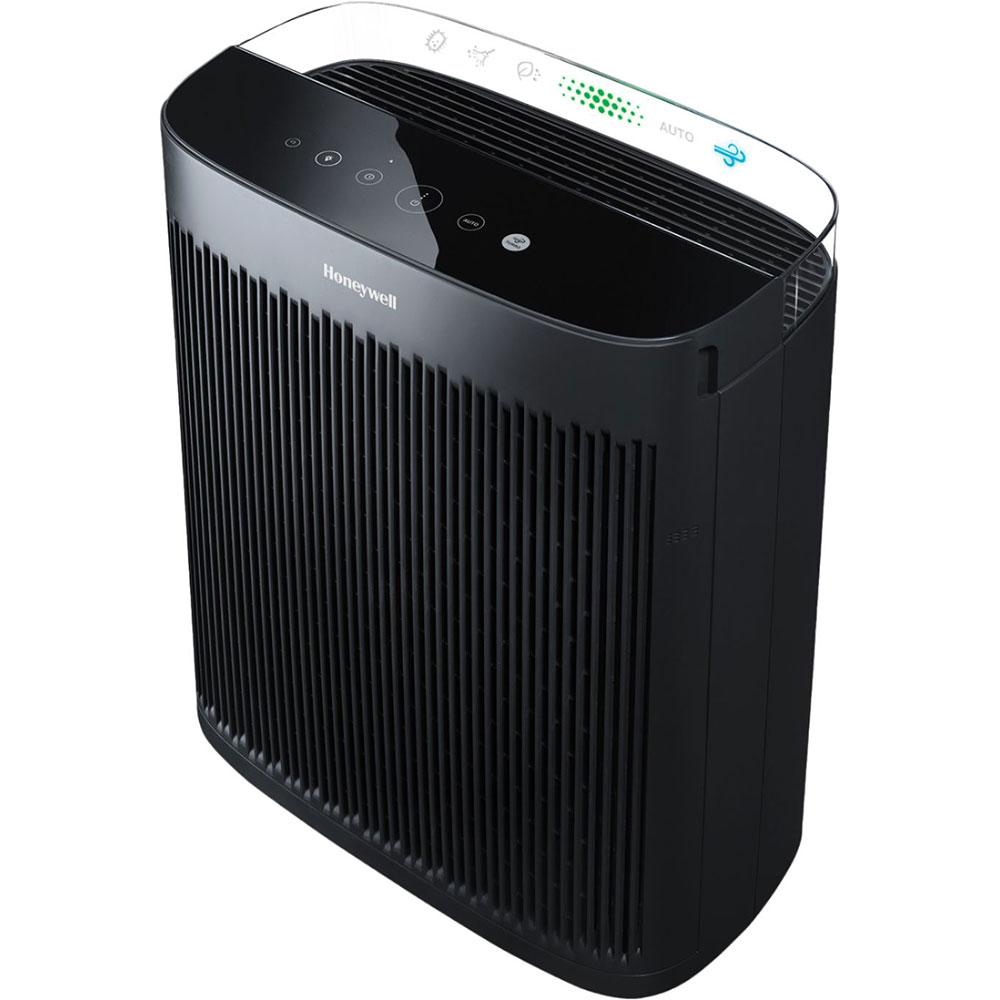**Best Humidifiers for COPD: Breathe Easier This Winter (2025 Guide) **
Dry winter air or over‑air‑conditioned rooms can leave your airways irritated, trigger coughing fits, and thicken mucus.
A good humidifier adds just enough moisture to keep your throat and bronchial passages comfortable—especially critical for people living with COPD.
With heating season approaching, indoor humidity becomes even more important. Forced-air heating systems can drop indoor humidity to desert-like levels (below 20%), making it harder to breathe and increasing the risk of respiratory infections.
We researched dozens of humidifiers on Amazon, factoring in output, ease of cleaning, noise, energy efficiency, and filter cost. Here are the models that rose to the top.
Affiliate disclosure: We may earn a commission if you purchase through links below, at no extra cost to you.
⭐ Quick Picks
| Best For | Model | Type | Tank | Coverage | Est. Price |
|---|---|---|---|---|---|
| Overall | Levoit LV600S Smart Hybrid | Cool & warm mist | 6 L | 753 ft² | ~$149 |
| Budget | Dreo HM101 | Cool‑mist ultrasonic | 2.5 L | 250 ft² | ~$49 |
| Energy Efficient | Canopy Bedside | Evaporative | 2.5 L | 500 ft² | ~$150 |
| Large Rooms | Blueair InvisibleMist | Evaporative | 3 L | 500 ft² | ~$200 |
| For Congestion | Vicks WarmMist V745A | Warm mist + medicated cup | 1‑gal | 300 ft² | ~$69 |
🥇 Best Overall — Levoit LV600S Smart Hybrid
Why we love it
Dual warm and cool mist modes with Wi‑Fi app control make this the most versatile option. The large 6-liter tank runs up to 60 hours on low, and the built-in humidistat maintains precise humidity levels automatically.
Key Features
- Ultrasonic cool & warm mist up to 753 ft²
- Smart humidity sensor with auto‑mode
- VeSync app control + voice compatibility
- Remote control included
- Essential‑oil diffuser tray
Performance Specs
- Output: Up to 600 mL/hr
- Runtime: 10-60 hours (depending on setting)
- Noise Level: <28 dB on quiet mode
- Energy Use: 110W (warm), 30W (cool)
Pros
- Dual mist capability for year-round use
- Large tank reduces daily refills
- Smart‑home integration (Alexa / Google)
- Precise humidity control
- Auto shut-off when empty
Cons
- Higher upfront cost
- Must use distilled water to avoid white dust
- App required to unlock all features
Check price on Amazon (affiliate)
🥈 Best Budget — Dreo HM101
Why we love it
An affordable ultrasonic that still includes essential features like humidity display, sleep mode, and whisper-quiet operation—perfect for bedrooms up to 250 ft².
Key Features
- Top-fill design for easy refills
- LED humidity display
- 3 mist levels + sleep mode
- Auto shut-off protection
Performance Specs
- Output: Up to 200 mL/hr
- Runtime: 12-25 hours
- Noise Level: <23 dB
- Energy Use: 28W
Pros
- Under $50 price point
- Very quiet operation
- Easy maintenance
- Compact footprint
Cons
- Smaller tank requires frequent refills
- No smart features or app control
- Cool mist only
See on Amazon (affiliate)
🥉 Best Energy Efficient — Canopy Bedside Humidifier
Why we love it
Doctor-designed with anti-mold technology and paper filters that eliminate white dust. Uses 80% less energy than ultrasonic models while producing invisible, mist-free humidity.
Key Features
- No-mist evaporative technology
- Anti-mold UV sanitization
- Filter-free operation (paper pre-filter only)
- Easy sterilization by boiling
Performance Specs
- Output: Self-regulating based on humidity
- Runtime: 36+ hours
- Noise Level: <35 dB
- Energy Use: 9W (ultra low)
Pros
- Lowest energy consumption
- No white dust or mineral buildup
- Self-regulating (won't over-humidify)
- Cleanest operation for COPD patients
Cons
- Higher upfront cost
- No warm mist option
- Slower initial humidification
Check price on Amazon (affiliate)
Best for Large Rooms — Blueair InvisibleMist
Why we love it
Smart app connectivity and dishwasher-safe tank combine with powerful evaporative technology to humidify spaces up to 500 ft² without creating white dust.
Key Features
- InvisibleMist™ evaporative technology
- Smart app control with auto-adjustment
- Dishwasher-safe water tank
- Real-time humidity monitoring
Performance Specs
- Output: Variable based on humidity needs
- Runtime: 24+ hours
- Noise Level: <32 dB
- Energy Use: 15W
Pros
- No white dust or minerals
- Smart humidity automation
- Large room coverage
- Easy cleaning maintenance
Cons
- Premium pricing
- Cool mist only
- Requires filter replacements
Check price on Amazon (affiliate)
Best for Congestion — Vicks WarmMist V745A
Why we love it
Compatible with Vicks VapoSteam inhalant for extra relief. The boiling process delivers germ‑free warm mist ideal for breaking up mucus during COPD flare-ups.
Key Features
- Built‑in medicated cup for Vicks inhalant
- Boiling water creates sterile steam
- Auto shut‑off when empty
- No filter maintenance required
Performance Specs
- Output: Up to 400 mL/hr
- Runtime: 12-15 hours
- Noise Level: <40 dB
- Energy Use: 150W
Pros
- Medication compatibility for congestion relief
- Sterile steam kills bacteria in water
- No filter replacements needed
- Soothing warm mist for winter comfort
Cons
- Higher energy consumption
- Requires regular de‑scaling with vinegar
- Warm mist may raise room temperature
- Not suitable around young children
Check price on Amazon (affiliate)
⚖️ Humidifier vs. Vaporizer: Safety & Cleaning Comparison
Many people use these terms interchangeably, but there are important differences for COPD patients:
| Feature | Cool-Mist Humidifier | Warm-Mist Vaporizer |
|---|---|---|
| Safety | Child/pet safe (no burns) | Risk of burns from hot water/steam |
| Cleaning Frequency | Daily emptying + weekly deep clean | Daily emptying + weekly descaling |
| Germ Risk | Higher (unless cleaned properly) | Lower (boiling kills bacteria) |
| Energy Use | Low (20-40W) | High (100-200W) |
| Best For COPD | Year-round use, sleep safety | Winter congestion, medication delivery |
| Maintenance | Must use distilled water | Can use tap water (but distilled preferred) |
COPD Safety Tip: Pulmonologists recommend cool-mist humidifiers for continuous overnight use, but warm-mist can provide relief during acute congestion episodes. Never use both simultaneously in the same room.
🧼 Complete Cleaning & Disinfection Guide
Proper maintenance is crucial for COPD patients to prevent harmful mold and bacteria growth.
Daily Maintenance (3 minutes)
- Empty tank completely each morning
- Rinse with clean water
- Refill with fresh distilled water
- Wipe exterior with dry cloth
Weekly Deep Clean (15 minutes)
Vinegar Method (Recommended for COPD):
- Mix 1 cup white vinegar + 1 cup water
- Fill tank and base with solution
- Let soak 15-20 minutes
- Scrub with soft brush to remove mineral buildup
- Rinse thoroughly until vinegar smell is gone
- Air dry completely before reassembling
For Heavy Buildup (Monthly):
- Use 1 tsp unscented bleach per 1 liter water
- Soak 15 minutes, then rinse extensively
- NEVER mix bleach and vinegar (creates toxic gas)
- Run with clean water until bleach odor is completely gone
Recommended Cleaning Products
COPD-Safe Disinfectants:
- Heinz White Vinegar - Natural, lung-friendly (affiliate)
- Clorox Regular Bleach - For monthly deep disinfection (affiliate)
- Humidifier Cleaning Tablets - Convenient weekly treatment (affiliate)
Warning Signs to Replace Your Humidifier:
- Persistent musty odor after cleaning
- Visible mold that won't scrub away
- Cracked tank that can't be properly cleaned
- White mineral buildup in hard-to-reach areas
🌡️ Seasonal Triggers: Why Winter Air Worsens COPD
Understanding seasonal challenges helps you use your humidifier most effectively:
Heating Season Problems (October - March)
- Forced-air heating drops indoor humidity to 10-20% (desert levels)
- Dry airways become irritated and produce thicker mucus
- Increased infections due to compromised nasal defenses
- Static electricity indicates dangerously low humidity
Temperature Extremes Impact
- Cold outdoor air holds less moisture naturally
- Rapid temperature changes stress respiratory system
- Indoor/outdoor transitions shock sensitive airways
Optimal COPD Humidity Levels by Season
- Winter: 40-45% (combat heating system dryness)
- Summer: 35-40% (prevent mold in A/C environments)
- Spring/Fall: 30-40% (balance allergies and comfort)
Pro Tip: Use a hygrometer to monitor levels. COPD patients should never let humidity drop below 30% or exceed 50%.
🔄 Updated Energy-Efficient Models
Modern humidifiers offer significant energy savings compared to older models:
Energy Star Certified Options
- Evaporative models: 5-15W (lowest consumption)
- Ultrasonic cool-mist: 20-40W (moderate)
- Warm-mist/steam: 100-200W (highest, but effective for congestion)
Smart Features That Save Energy
- Auto shut-off when target humidity reached
- Sleep mode reduces output overnight
- Room size sensors prevent over-humidification
- Weather integration adjusts based on outdoor conditions
🧭 How We Chose
- COPD-specific safety (mold resistance, easy cleaning)
- True output rating vs. marketing claims
- Energy efficiency for year-round use
- Noise under 35 dB on sleep mode
- Real‑world COPD user reviews and pulmonologist recommendations
- Cleaning ease (wide‑mouth tanks, accessible surfaces)
❓ Frequently Asked Questions
What's the safest humidity level for COPD patients?
Respiratory therapists recommend 40–45% relative humidity for COPD patients. Too high (>50%) promotes mold and dust mites; too low (<30%) dries airways and thickens mucus. Monitor with a hygrometer for accuracy.
Can humidifiers spread mold and make COPD worse?
Yes, if not cleaned properly. Daily emptying and weekly disinfection with vinegar prevent mold growth. Signs of contamination include musty odors, visible slime, or worsening respiratory symptoms after use.
Cool‑mist or warm‑mist—what's better for COPD?
Cool mist is safest for continuous overnight use and year-round operation. Warm mist can help break up mucus during congestion episodes but uses more energy and poses burn risks. Many COPD patients benefit from having both options.
How often should I clean my humidifier?
Empty and rinse daily. Deep‑clean with vinegar weekly. If someone has active COPD symptoms or lives in hard-water areas, clean every 3 days to prevent mineral and bacteria buildup.
Should I use tap water or distilled water?
Distilled water is strongly recommended for COPD patients. Tap water contains minerals that create white dust and provide breeding grounds for bacteria—both problematic for sensitive airways.
Can I run a humidifier 24/7 during winter?
Yes, with proper maintenance. COPD patients often benefit from continuous winter humidification due to heating system dryness. Use auto-mode to prevent over-humidification and ensure daily tank emptying.
What should I do if my COPD symptoms worsen with humidifier use?
Stop use immediately and consult your pulmonologist. Worsening symptoms may indicate mold contamination, over-humidification, or that your specific COPD type responds better to other humidity levels.
Related COPD Management Resources
Pair your humidifier with these essential tools for comprehensive respiratory health:
- The Best Air Purifiers for People with COPD - Remove triggers from your air
- Top 3 Pulse Oximeters for Managing COPD at Home - Monitor oxygen levels daily
- COPD-Safe Cleaning Products - Eliminate household triggers
- Air Quality Checklist for COPD Homes - Complete environmental assessment
- Best Nebulizers for COPD - Medication delivery systems
Final Thoughts
A good humidifier is a simple, affordable way to keep your airways comfortable through winter's dry heating season and year-round climate control.
For most COPD households, the Levoit LV600S Smart Hybrid offers the best combination of dual-mist capability, smart controls, and large capacity for minimal daily maintenance.
For budget-conscious buyers, the Dreo HM101 provides reliable cool-mist operation with whisper-quiet performance. Those prioritizing energy efficiency and the cleanest possible operation should consider the Canopy Bedside with its innovative mist-free technology.
Remember: the best humidifier is worthless without proper maintenance. Daily emptying and weekly cleaning prevent the mold and bacteria growth that can worsen COPD symptoms.
Pair your humidifier with a quality air purifier for the ultimate clean‑air setup that helps you breathe easier all year long.
Last updated: September 2025











